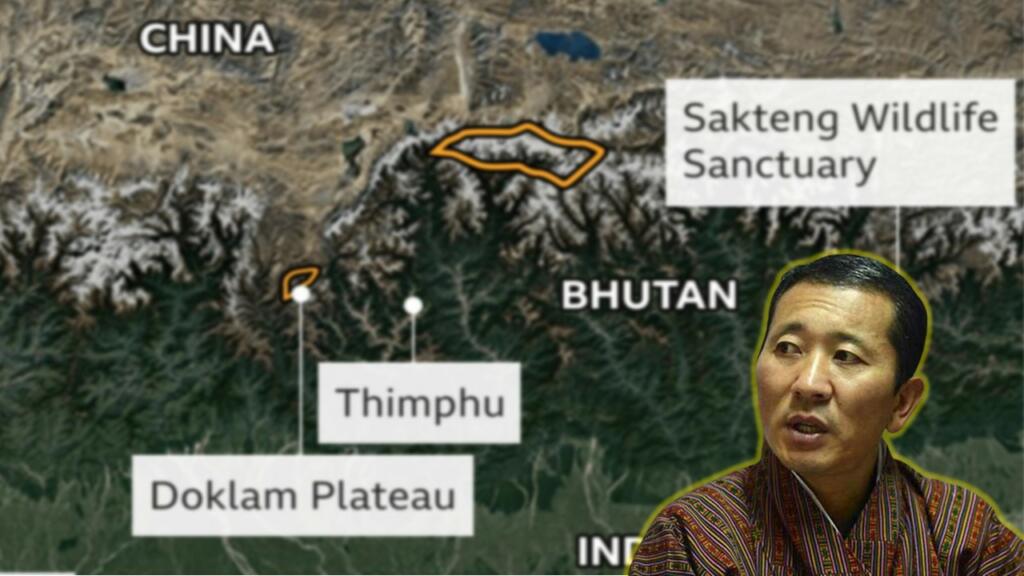Bhutan PM statement: Your mistake can prove fatal for yourself, but what if it becomes fatal for others? Believe it or not, any debate around Bhutan must take into consideration that it was the annexation of Tibet by the PRC in 1950 that jeopardised the Himalayan frontier.
So, firstly, Bhutan, which is the protected state, is in doldrums with China because of the blunders of Pt. Nehru. Secondly, talking about present conditions, Bhutan’s approach towards China does have impacts on India, so there is a need for careful and logical analysis of each action.
Bhutan PM statement shocks Indians
As it is now well known, the PM of Bhutan, Lotsay Tshering, has given a statement that has caused unrest in the country’s major population, India. And that is obvious, as Bhutan has always held a special status in India. Despite being a different country, people perceive it as another Indian state that shares the same cultural heritage.
Lotsay Tshering said, “Doklam is a junction point between India, China, and Bhutan. It is not up to Bhutan alone to solve the problem.” According to an interview given to Belgian Daily, he further added, “We are three. There is no big or small country; there are three equal countries, each counting for a third.”
On another question of Chinese intrusion in Bhutan based on a report by British Tibetologist Robbie Barnett, he replied that the borders are not yet demarcated and that “there is no intrusion”. He also said that it is an international border, and they know exactly what belongs to them.
Critical analysis of Bhutan PM statement
Now, if we go by fact, the first claim of China being a party cannot be turned down. Be it India or Bhutan, both have a consensus on the fact that Doklam is in the proximity of the trijunction, and so it is a geographical fact. But other statements are self-contradictory. If there is no clear demarcation, how is it even possible to claim that there was no intrusion? Giving a compromising and confusing statement is an apparent help to China’s salami-slicing policy.
China-Bhutan dispute and concerns for India
As the border negotiations have been a long process between China and Bhutan, it was 1996 when China first proposed a territory swap plan. China proposed to swap the northern Bhutan valley area of 495 square kilometres for the western pastures of 269 square kilometres, which included Doklam.
This shows that it was not 2017 when China eyed Doklam. Later, after the Doklam clash and amidst border negotiations, China again proposed a territory swap agreement for 2020. This time, the Sakteng Wildlife Sanctuary, situated in north-eastern Bhutan, was claimed by China and subsequently offered to Bhutan in exchange for the Doklam region.
The geography of Sakteng Wildlife Sanctuary is even more interesting. To the north and east of the sanctuary is Tawang, India. Yes, the same Tawang that became the site of clashes where the Indian army thrashed the Chinese in December 2022. There is no Chinese access to the Sanctuary region except from interior Bhutan and Tawang; that’s why China desperately wanted to one-up India and snatch Tawang from India through salami slicing.
Both in 1996 and 2020, Bhutan denied such proposals, and, factually, India’s security concerns were also the reason for that. As a result, Bhutan faced increasing territorial threats from China.
Border negotiations history
The first border negotiations started in 1984, and to date there have been 11 expert groups and 25 rounds of border negotiations. In 2021, both countries signed an MOU for expediting the China-Bhutan boundary negotiations through a three-step road map.
It is important to note that there is no official response by the government of India or specifically by MEA. This is also something that the diplomatic pundits are trying to decode. But it should not be concluded that the Indian government is ignorant. China is a close witness to India’s surprising responses, like the one in South Panganso Tso when India captured the strategic Kailash ranges.
Just a week after the MoU was signed between Beijing and Thimpu, India’s Foreign Secretary, Vinay Mohan Kwatra, visited the kingdom of Bhutan. India’s ambassador to Bhutan, Sudhakar Dalela, tweeted about “engaging conversations, positive outcomes, and expanding partnership.”
Foreign Secretary @AmbVMKwatra concludes a productive two day official visit to Bhutan. Engaging conversations, positive outcomes, expanding 🇮🇳🇧🇹partnership. Thank you Team @IndiainBhutan for your tireless efforts in advancing 🇮🇳🇧🇹close ties of friendship and cooperation. pic.twitter.com/EORXNDivnp
— Sudhakar Dalela (@SudhakarDalela) January 20, 2023
It’s better to deal responsibly
So, the dispute between Bhutan and China is not new, and factually, China cannot be ignored from it. However, there is a need to make a dedicated policy to deal with China’s aggression in the area. This can only be done if India and Bhutan speak in the same tone.
As deep analysis shows, India and Bhutan are actually on the same boat. Aside from that, a large part of the media should understand that without a deep analysis, the important issues should not be reported insensibly. These types of issues are crucial for Indian foreign policy, and irresponsible statements can worsen the situation, which so far seems to be dealt with shrewdly by the government. Otherwise, Nepal is an example of how things could turn out.
Support TFI:
Support us to strengthen the ‘Right’ ideology of cultural nationalism by purchasing the best quality garments from TFI-STORE.COM
